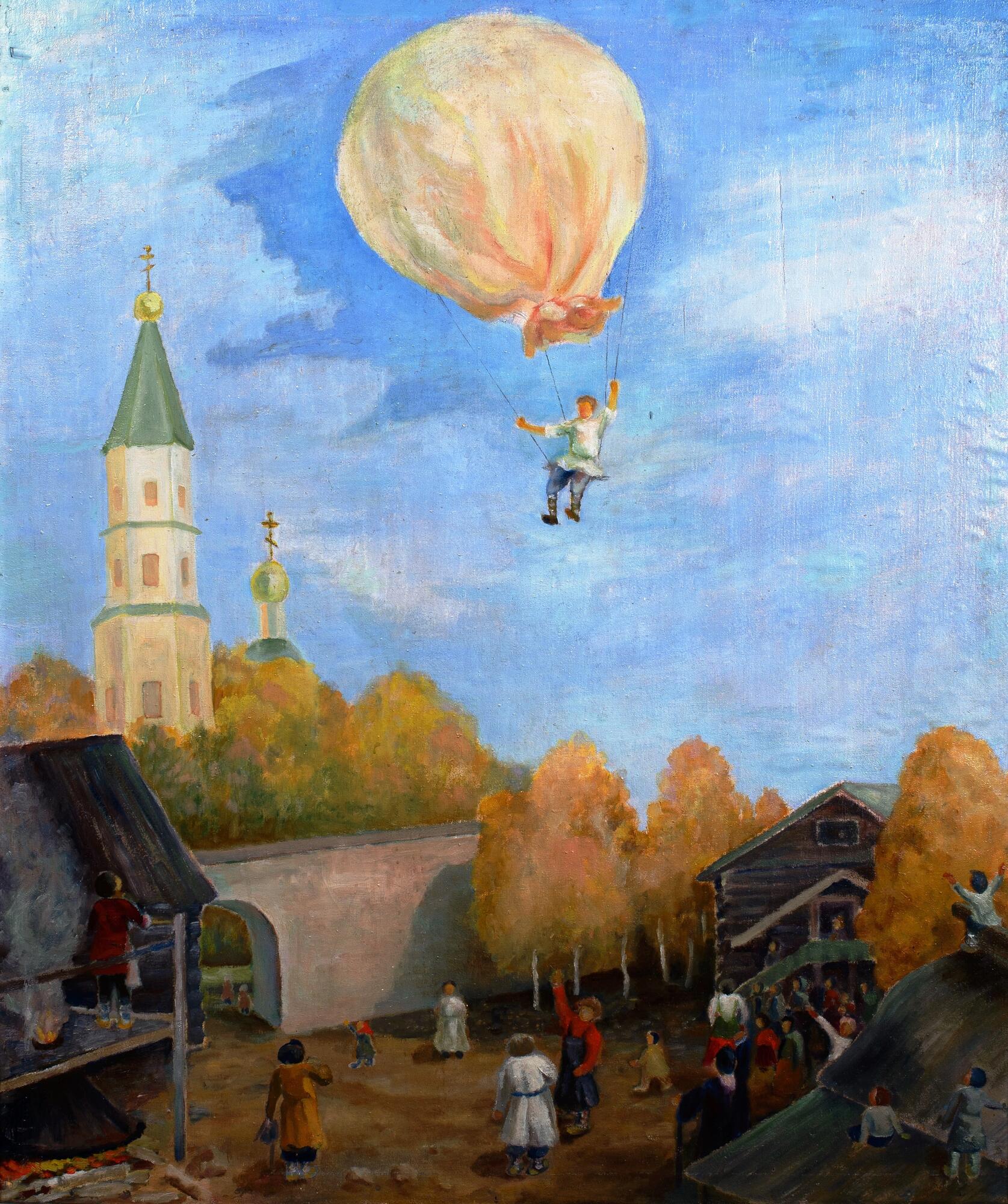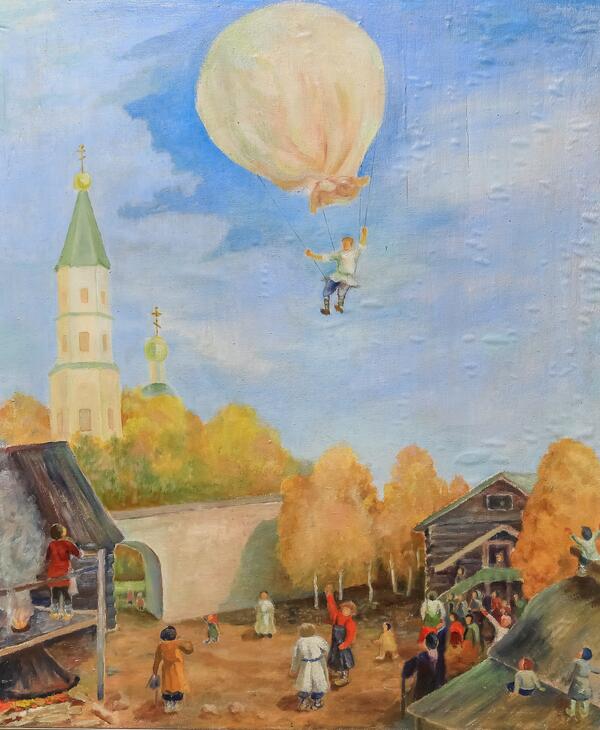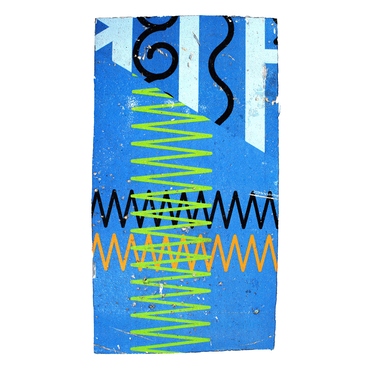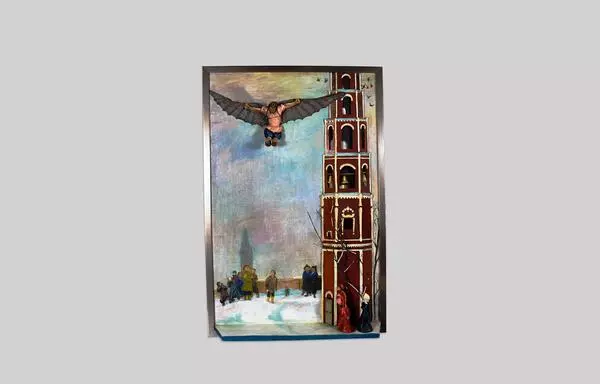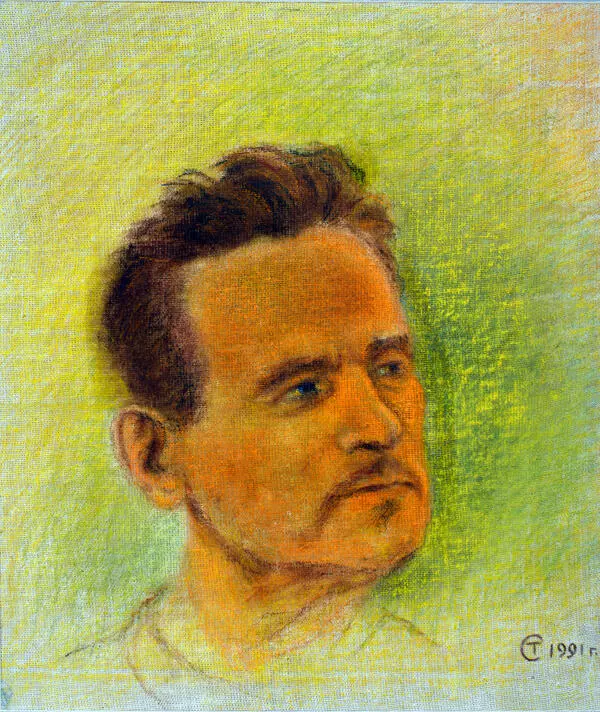Gherman Titov’s father Stepan Pavlovich painted “A Man in a Hot-Air Balloon” for a school museum of cosmonautics established in the village of Polkovnikovo, Altai Krai, in 1965. Titov Senior had no formal art education, but he painted a lot, including portraits of people important in his life, landscapes of his native region, and works associated with the longing of humans to fly up to the sky. The first successful attempt to conquer the sky was made in France.
The creators of the balloon — Joseph and Etienne Montgolfier — were born into a large family with 16 children. The brothers were sent to study in Paris where one of them showed the talents of an inventor, while the other demonstrated commercial abilities. The idea of lifting up objects with hot air came to the head of the elder brother — Joseph. Together with his younger sibling, he began research on the subject.
They made the first successful experiments with paper bags, and then sewed the shell of a huge balloon (with a diameter of about 12 meters) of sackcloth. The Montgolfier brothers scheduled the first trial launch of the balloon, still without passengers, for June 5, 1783. Though the balloon of the Montgolfier brothers flew only about a kilometer, it was remarkable as the first flight of a human-built apparatus capable of taking to the air.
Three months later, a new start took place. It was held near the royal palace of Versailles in the presence of the entire royal court, this time with passengers. Those were a sheep, a duck, and a rooster, accommodated in a light but spacious basket made of willow twigs attached to the balloon. The flight was successful: the animals, having flown about four kilometers, landed safely on the ground.
Trial flights involving humans as passengers took place in November of the same year. The daredevils who ventured into the air were the scientist Pilâtre de Rozier and the Marquis Francois Laurent d’Arland. The balloon carried them about 9 kilometers in 20 minutes — that is how the era of aeronautics began in the history of mankind. This is the subject matter of one of the earliest Cosmonautics Museum exhibits — Stepan Titov’s painting “A Man in a Hot-Air Balloon”.
It was under the guidance of Titov Senior that schoolchildren of Polkovnikovo made items necessary for the museum — showcases, stands, shelves, and much more. All kinds of exhibits were made by the teacher himself: a pair of short (“stumbling”) skis — the first serious hobby of the future cosmonaut, a bust of Konstantin Eduardovich Tsiolkovsky, and mock-up models of rockets. Today, these items make an important part in the museum’s exposition.
The creators of the balloon — Joseph and Etienne Montgolfier — were born into a large family with 16 children. The brothers were sent to study in Paris where one of them showed the talents of an inventor, while the other demonstrated commercial abilities. The idea of lifting up objects with hot air came to the head of the elder brother — Joseph. Together with his younger sibling, he began research on the subject.
They made the first successful experiments with paper bags, and then sewed the shell of a huge balloon (with a diameter of about 12 meters) of sackcloth. The Montgolfier brothers scheduled the first trial launch of the balloon, still without passengers, for June 5, 1783. Though the balloon of the Montgolfier brothers flew only about a kilometer, it was remarkable as the first flight of a human-built apparatus capable of taking to the air.
Three months later, a new start took place. It was held near the royal palace of Versailles in the presence of the entire royal court, this time with passengers. Those were a sheep, a duck, and a rooster, accommodated in a light but spacious basket made of willow twigs attached to the balloon. The flight was successful: the animals, having flown about four kilometers, landed safely on the ground.
Trial flights involving humans as passengers took place in November of the same year. The daredevils who ventured into the air were the scientist Pilâtre de Rozier and the Marquis Francois Laurent d’Arland. The balloon carried them about 9 kilometers in 20 minutes — that is how the era of aeronautics began in the history of mankind. This is the subject matter of one of the earliest Cosmonautics Museum exhibits — Stepan Titov’s painting “A Man in a Hot-Air Balloon”.
It was under the guidance of Titov Senior that schoolchildren of Polkovnikovo made items necessary for the museum — showcases, stands, shelves, and much more. All kinds of exhibits were made by the teacher himself: a pair of short (“stumbling”) skis — the first serious hobby of the future cosmonaut, a bust of Konstantin Eduardovich Tsiolkovsky, and mock-up models of rockets. Today, these items make an important part in the museum’s exposition.
